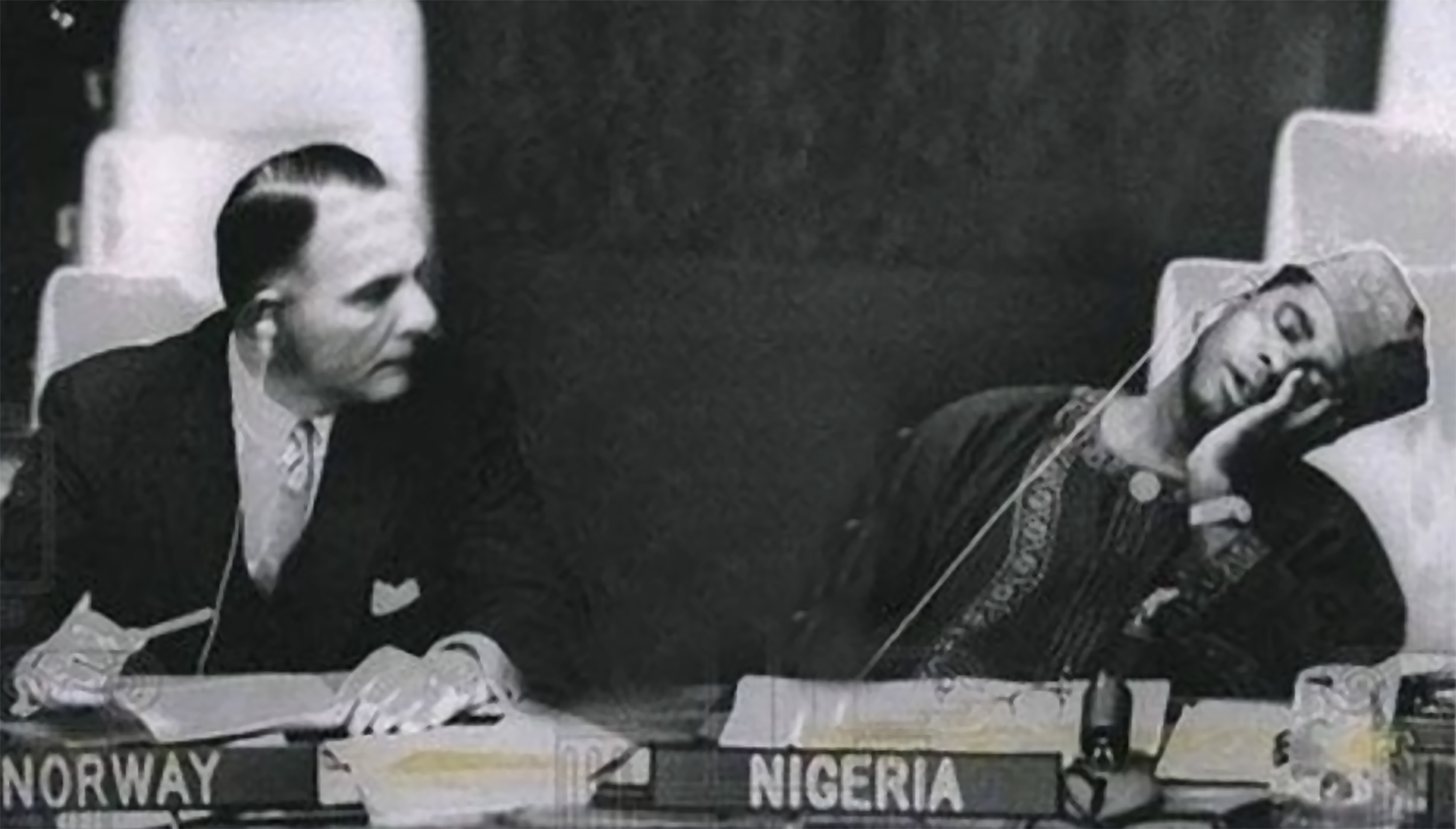

New York, 1960. At a UN meeting, Nigeria’s Foreign Minister and UN ambassador Jaja Wachucu slept. Nigeria had just achieved independence on 1 October. Therefore, Wachuku became the first UN representative in Nigeria and had just taken office.
In contradiction to the photograph that Wachuku was taken into that program, Time magazine published an article about it, saying it was “a dynamic UN ambassador to Nigeria.” He underlined his diplomatic, living, bold and enthusiastic style and assured that thanks to this type of politician, “just over two months after independence, Nigeria was on its way to becoming one of Africa’s major forces.”
Jaja Wachuku (1918-1996) was the prince of Ngwa, “heir to the leaders of 20 generations of the people of Igbo in eastern Nigeria.” However, after studying law at Trinity College in Dublin and practicing as a lawyer in the Irish capital, he returned to Nigeria in 1947 and began his political career from below. In 1949 he became a member of the authority of the people of Ngwa, while from 1953 he was elected to several national positions as a member of the NIP independence party.
At the meeting, one of the group representatives made a racist comment. Wachuko wanted to express the pain caused by that comment, but, denying his word, they did not allow it. For this reason, he refused to listen to his intervention and made remarkable sleeping plants – according to some witness, with snoring – in protest.
After years in the independence movement, it was he who received the Charter of Freedom from the British representatives at the Nigerian Independence Ceremony. And he didn't waste time: six days later, on October 7, he put the Nigerian flag on the UN, proclaiming his country as a 99 member of the organization. On 14 November, Nigeria became UNESCO No. 58. He was also elected as the first African member of the United Nations Conciliation Commission, which led him, inter alia, to mediate on the process of Congo ' s independence. It also negotiated the abolition of the death penalty imposed on Nelson Mandela and other South African activists.
All this corresponds to the dynamic image described by Time magazine, but not to the photograph they made in the UN program. Actually, Jojo Wachuku didn't sleep, pretended to be.
At the meeting, one of the group representatives made a racist comment. Wachuko wanted to express the pain caused by that comment, but, denying his word, they did not allow it. For this reason, he refused to listen to his intervention and made a remarkable sleep plant – according to some witness, with snoring – in protest.